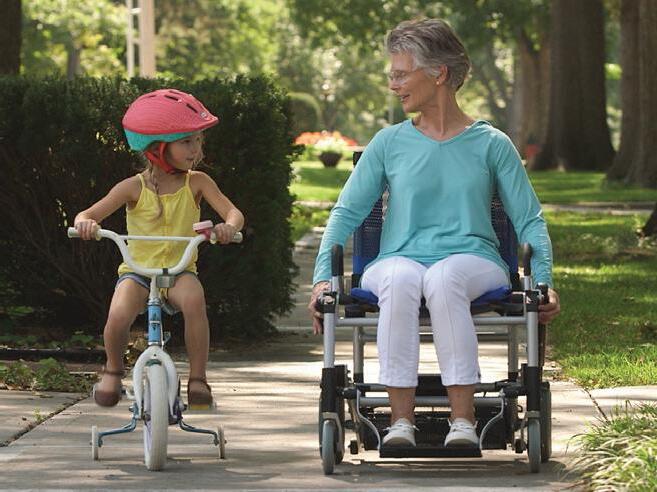
4 minute read
Service territory FAQs
What is a service territory?
Electric certified territories (ECTs), often called “service areas” or “service territories,” are geographic regions where an electric company — which may be either an investor-owned utility or a rural electric cooperative — has the obligation and exclusive right to provide electric service. The Public Utilities Commission of Ohio is the authority regarding ECTs, and you can view the PUCO’s interactive map of ECTs at https://puco.ohio.gov/utilities/electricity/servicearea-map/electric-certified-territories-webmapping-application.
What’s the di erence between my co-op and an investor-owned utility?
Investor-owned utilities are business organizations that are intended to be profitable. An electric cooperative is a notfor-profit, member-owned utility that provides electric service solely to its members. Each cooperative has its own unique set of bylaws and is governed by a board of directors elected from and by the members of the coop. Nationally, more than 800 distribution cooperatives serve about 56% of the U.S. land area and more than 21.5 million homes, schools, businesses, and farms.
Why does the PUCO not regulate cooperatives?
The PUCO does not have jurisdiction over electric cooperatives and municipalities by the definitions of a “Public Utility” as defined in 4905.02 of the Ohio Revised Code, which states that an electric company that operates its utility not for profit, or that is owned and operated by any municipal corporation, is not included.
Ohio’s co-op service territories
North Western Electric Cooperative, Bryan
Tricounty Rural Electric Cooperative, Malinta
Paulding Putnam Electric Cooperative, Paulding
Hancock-Wood Electric Cooperative, North Baltimore
North Central Electric Cooperative, Attica
Firelands Electric Cooperative, New London
Lorain-Medina Rural Electric Cooperative, Wellington
Midwest Electric, Inc., St. Marys
Mid-Ohio Energy Cooperative, Kenton
Darke Rural Electric Cooperative, Greenville
Pioneer Electric Cooperative, Piqua
Logan County Electric Cooperative, Bellefontaine
URE–Union Rural Electric Cooperative, Marysville
Consolidated Cooperative, Mount Gilead
Holmes-Wayne Electric Cooperative, Millersburg
Carroll Electric Cooperative, Carrollton
Frontier Power Company, Coshocton
The Energy Cooperative, Newark
Guernsey-Muskingum Electric Cooperative, New Concord
South Central Power Company, Lancaster
Washington Electric Cooperative, Marietta
Butler Rural Electric Cooperative, Oxford
Adams Rural Electric Cooperative, West Union
Buckeye Rural Electric Cooperative, Rio Grande
Midwest Energy and Communications, Cassopolis, Michigan
Energy and Communications serves 1,000 members in northwestern Ohio.)
The co-ops determined the areas they’d serve when they formed, mostly based on geography and whether service was available from anyone else. Those territories remained mostly constant, though they were not legally defined. The situation led to some areas of overlapping service, which not only created confusion and safety issues, for example, for first responders arriving on an accident scene, but made it di cult for the utilities to plan for future growth.
Then in 1978, co-ops banded together to push the Ohio Legislature to pass House Bill 577, which defined service territories and mandated the Public Utilities Commission to certify the areas where each electric provider in the state has both the obligation and exclusive right to provide electric service. The legislation protected both co-ops and consumers, who could no longer be denied service for simple reason of convenience to the electricity provider. With the publication of the PUCO map, all co-ops, municipal systems, and investor-owned companies were granted specific, legally defined, and agreed-upon areas they serve. Co-ops serve about 400,000 homes and businesses in areas within 77 of Ohio’s 88 counties.
Service territories remained unchanged in the 1990s despite the deregulation that allowed competing energy providers to supply electricity to consumers through energy choice; co-ops and municipalities were specifically exempted. The PUCO’s regulatory authority does not extend to either government-run municipalities or member-run cooperatives.
And while that history is nice, members like the Bania family are just happy the place they live happens to be served by a co-op. “When our power was out for a couple of days during that winter storm a while back, we would watch our neighbor go out at all hours to get people reconnected,” Emily says. “He kept checking on us because he knew it might be a while and wanted to make sure we were OK. I can’t imagine you get that with the bigger companies.”
Remember when you were a child and got your first bicycle? I do. It gave me a sense of independence . . . I felt like I could go anywhere, and it was so much easier and more enjoyable than walking. Well, at my age, that bike wouldn’t do me much good. Fortunately, there’s a new invention that gives me the freedom and independence to go wherever I want . . . safely and easily. It’s called the Zoomer, and it’s changed my life.
My Zoomer is a delight to ride! It has increased my mobility in my apartment, my opportunities to enjoy the out-of-doors, and enabled me to visit the homes of my children for longer periods of time. The various speeds of it match my need for safety, it is easy to turn, and I am most pleased with the freedom of movement it gives me.
Sincerely, A. Macon, Williamsburg, VA
After just one trip around your home in the Zoomer, you’ll marvel at how easy it is to navigate. It is designed to maneuver in tight spaces like doorways, between furniture, and around corners. It can go over thresholds and works great on any kind of floor or carpet. It’s not bulky or cumbersome, so it can roll right up to a table or desk– there’s no need to transfer to a chair. Its sturdy yet lightweight aluminum frame makes it durable and comfortable. Its dual motors power it at up to 3.7 miles per hour and its automatic electromagnetic brakes stop on a dime. The rechargeable battery powers it for up to 8 miles on a single charge. Plus, its exclusive foldable design enables you to transport it easily and even store it in a closet or under a bed when it’s not in use.
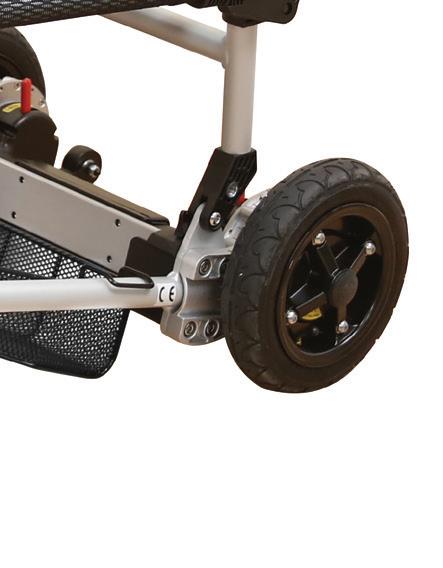
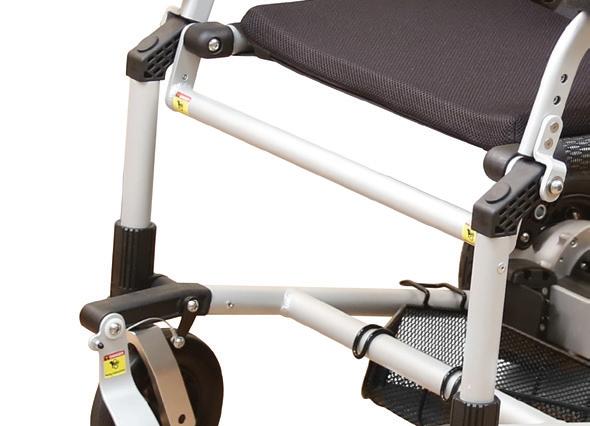
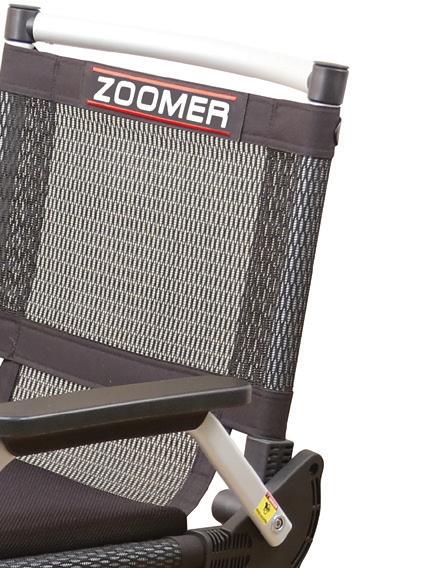
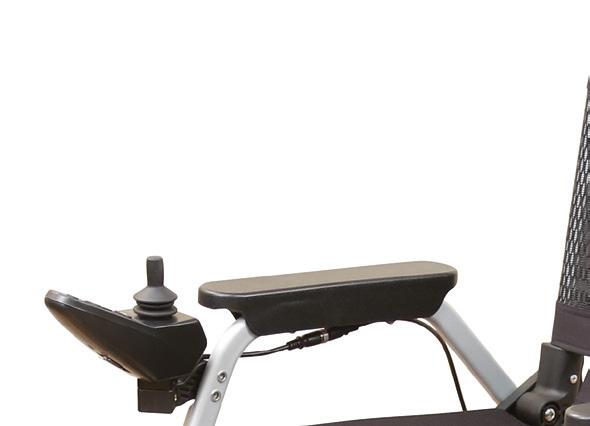
Why spend another day letting mobility issues hamper your lifestyle? Call now and find out how you can have your very own Zoomer.

